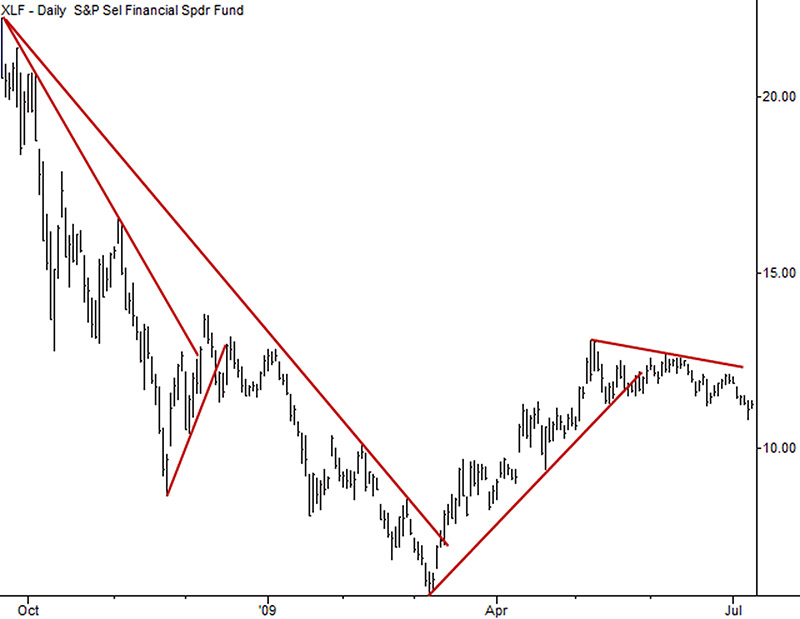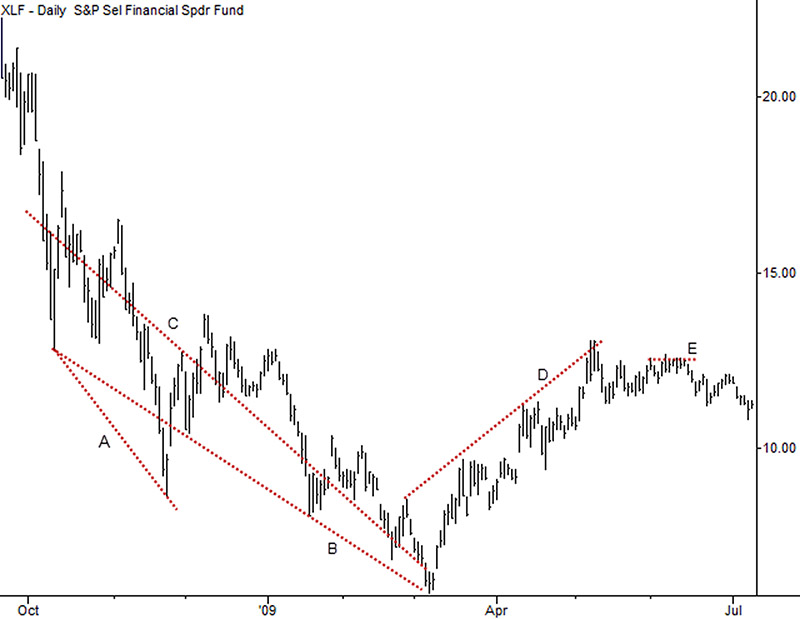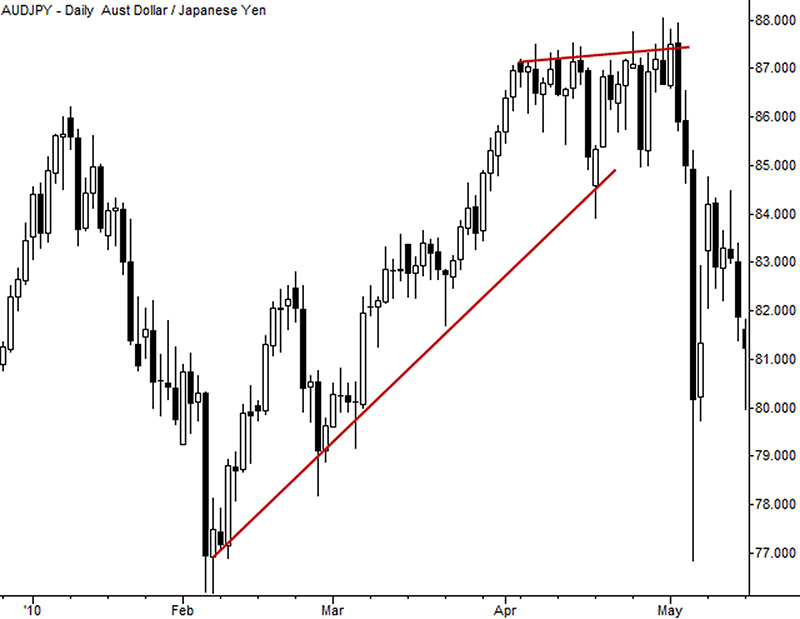Trendlines 101
Trendlines are perhaps the most used and abused tool in modern technical analysis. It is difficult to even come up with a precise definition of a trendline, or with firm rules for where and how to draw them. One good working definition is that a trendline is a line drawn between two points on a chart, but then there are the internal trendlines, which can be drawn anywhere through the middle of price bars. In my experience teaching and mentoring, as soon as you start telling traders that some trendlines may be better than others, you are met with the argument that they can draw any trendline they want. To further complicate matters, market action is so random that we can see price action that looks convincing around even random trendlines, so it is very difficult to evaluate trendlines subjectively. But they are usually drawn subjectively, so it is impossible to evaluate them objectively. I do not have a perfect answer here, but I will share a no-nonsense approach to trendlines that has served me very well over the years. As always, adapt these tools for your own style and methodology.
Standard trendlines
Standard uptrend lines are drawn between higher lows in an uptrend; the standard downtrend line is a line drawn between lower highs in a downtrend. The uptrend line shows where buyers have stepped in on the declines with additional demand and have bid the market higher, which is why Wyckoff called this line the demand line. In a downtrend, the downtrend line, or the supply line, shows where additional sellers have come into the market to arrest the bounces. Though it is possible to draw trendlines according to other rule sets, breaks of those trendlines are not likely to be as significant. If you are drawing standard trendlines, be certain of these points:
- They slope with the trend. Uptrend lines are upward sloping, and downtrend lines slope downward.
- Uptrend lines are underneath prices, marking areas of potential support. Downtrend lines are possible resistance areas, and must be drawn above

The next chart shows examples of nonstandard trendlines:
- A is drawn between lows in a downtrend instead of between highs in a downtrend.
- B is also drawn between lows in a downtrend. Furthermore, it ignores a large price spike in an effort to fit the line to later data.
- C is more of a best-fit line drawn through the center of a price area. These may be drawn freehand or via a procedure like linear regression.
- D is drawn between highs in an uptrend.
- E raises a critical point about trendlines: They are lines drawn between successive swings in the market. If there are no swings, there should be no trendline. It would be hard to argue that the market was showing any swings at E, at least on this time frame. This trendline may be valid on a lower time frame, but it is nonstandard on this time frame.

Don't "cut" prices
There is a debate among traders and analysts about whether trendlines should cut through prices, as shown in the next chart and example B of the chart above . Of course, you can draw any line you want to and there are good arguments to be made on both sides, but my preference is to draw them so that they do not pass through any prices at or between the two attachment points for the line. Why is this important? For the simple reason that, if the trendline had already been violated when you first drew it, how significant can you expect that line to be when it is touched again? To me, it is far more logical to create a line that defines the slope of the trend so that the line is potentially meaningful when it is touched in the future. A word of warning to traders who use candlestick charts is in order here. Because the body of the candle emphasizes the space between the open and the close of the bar, it is often tempting to draw trendlines that touch these bodies but that cut the shadows. This is a sloppy practice that should be avoided (unless you are only executing on the close of the bar and intrabar penetrations do not matter.)

There must be swings
In general, trendlines are tools to define the relationship between swings, and are a complement to the simple length of swing analysis. As such, one of the requirements for drawing trendlines is that there must actually be swings in the market. We see many cases where markets are flat, and it is possible to draw trendlines that touch the tops or bottoms of many consecutive price bars. With one important exception later in this chapter, these types of trendlines do not tend to be very significant. They are penetrated easily by the smallest motions in the market, and there is no reliable price action after the penetration. Avoid drawing these trendlines in flat markets with no definable swings.



